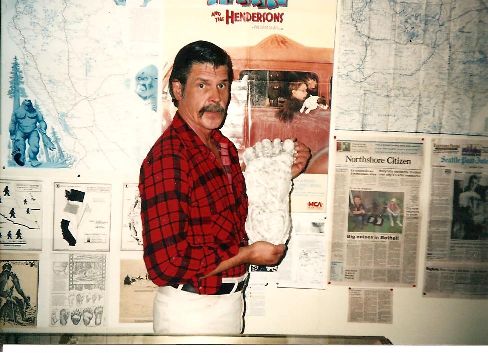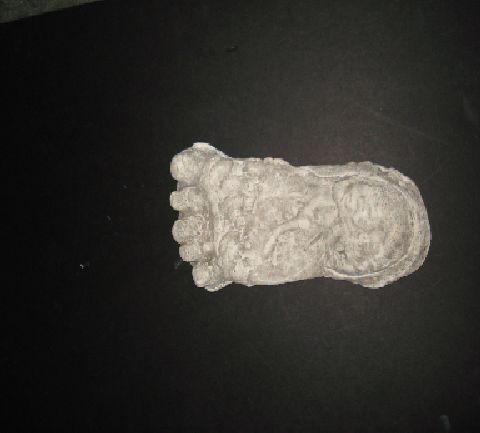
All time best known Bigfoot track cast. Mt. Rainier (1990) From: Mt. Rainier BF report by Grant & Karen Ferguson of Graham, WA. (Sept 7, 1990) Casted by Cary & Cliff Crook Sept 8, 1990.
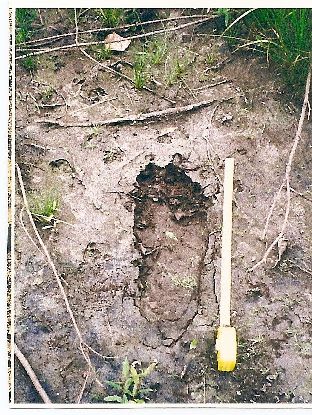
A Bigfoot track in mountain pond bottom muck measures 14 3/4 in l x 6 in wide (approx). Tracks of foraging night critters (raccoons and coyotes) were also captured in these photos of Bigfoot tracks. Summer 1998. Snoqualmie forest, WA. Cliff Crook and Bigfoot Tracks


How to cast a Bigfoot Track
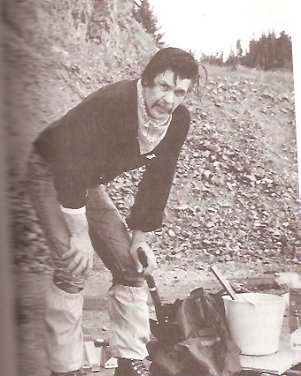
You will need: A one gallon plastic pail, a mixing stick, a one gallon jug of water, and a small sack of plaster. Fill pail to 1/2 of plaster, pour water slowly while mixing until the mix is pancake batter thickness. Stir until lumps are gone. Pour into center of track first and continue to spread the pour into the track until track is filled. Wait a half hour before lifting the cast. Lift it out carefully by using your mixing stick, paddle or spoon. A flapjack flipper makes a good mixing tool and track cast lifter. Use the extra water for washing the pail, mixing tool, and hands. Place the track cast on sticks or off flat surface to allow it's full 3 day air drying process.

Tips: Always best with some practice, so try a couple with your own footprint first. Look for any track on the trail clearest of pebbles, sticks, or any other excess of debris. If the outside temperature is below 50 degrees F, you can expect trouble with the plaster setting. 55 to 75 degrees are ideal temperatures for track casting with plaster.
Hoh Rain Forest Plaster Track Cast 2000

1982 Walla Walla Track was dermal ridge focus bigfoot hocus-pocus?
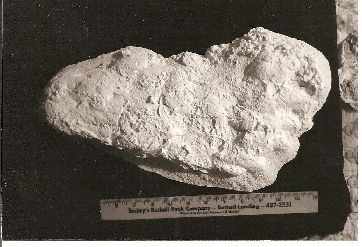
Dermal Ridges (aka) Skin Prints. Dr. Grover S. Krantz/"The Sasquatch Scientist" detected dermal ridges on some Bigfoot tracks. In the mid 1980's there was a case of a footprint shaped cast dubbed "The Indiana track", a building construction worker used a black walnut shell to prank in the appearance of dermal ridges into a dirt pressed version of a Bigfoot track. In this case, the prankster had targeted Dr. Grover Krantz with a big footprint shaped fake complete with faked dermal ridges. Sometimes, a Bigfoot track cast has marks left by a person who touches in fingerprints innocently while examining the footprint before it is casted. If a Bigfoot track cast is missing dermal ridge prints, it doesn't mean the track was faked or loses it's evidence value. Sometimes a soil surface doesn't allow much to register. Check out the website at the bottom for more on dermal ridges. Plaster casted footprints containing "dermal ridges" do nothing in determining a supposed Bigfoot track's authenticity, and like Bigfoot tracks, dermal ridges can be faked. Believing that dermal ridges can scientifically decide which Bigfoot tracks are real or not is mere myth.

Dec 7, 2008 - Matt Crowley with Cliff Crook. Here Matt examines Bigfoot track cast originals from Elma, WA. and a Nisqually River area tracks near Mt. Rainier. Matt finds various signs inside the casts which dispel the "dermal ridges myth".
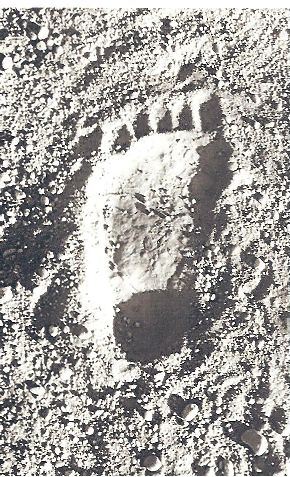
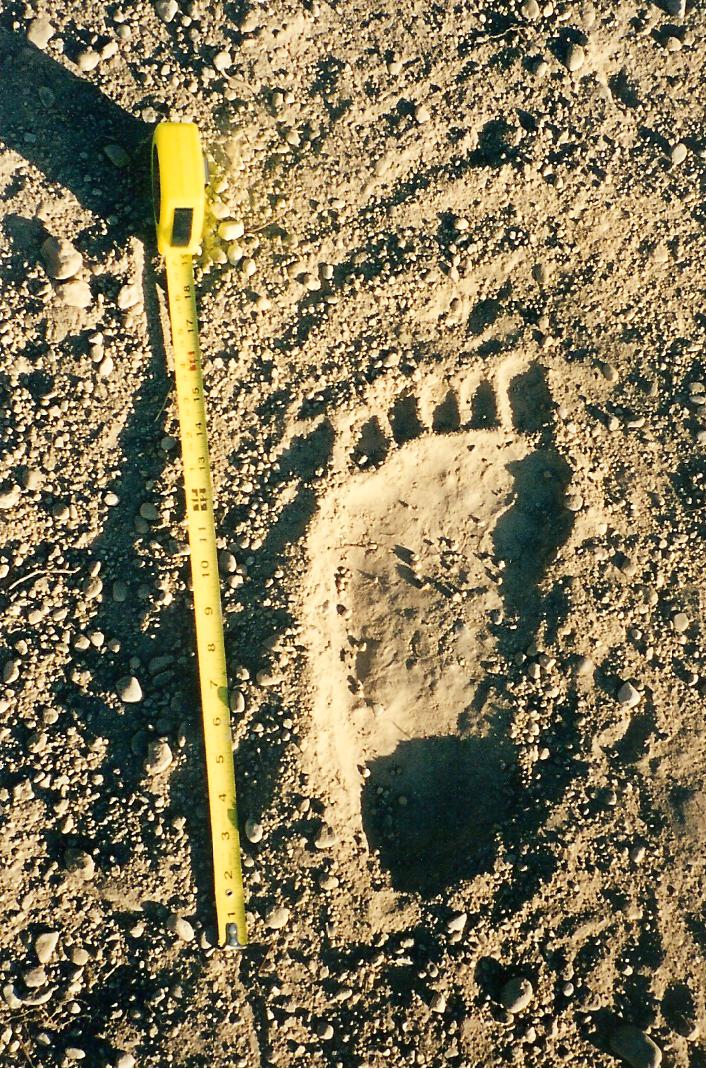
The Straddle-line Test by Cliff Crook
This is the first part of the (7) part track detection test which I developed over three decades ago to quickly separate faked Bigfoot trails. If a trail does not pass the first test, the reported Bigfoot track find fails as prankery. The straddle line is an invisible horizontal line of space between the right and left footprint in each step. If there are no obstacles to step over or around in the path of the footprints, the straddle line measurement should remain the same. Any least waiver of the straddle line reveals an unnatural step. An unnatural step is the trademark left by a prankster wearing fake feet who forces down his steps to make sure they are visible and appear very heavy stepped. To test your own straddle line measurement, walk on a wet beach shore or in the snow. Your straddle line remains the same. The measurement is made from the big toe edge of one footprint across to the heel of the opposite footprint.
